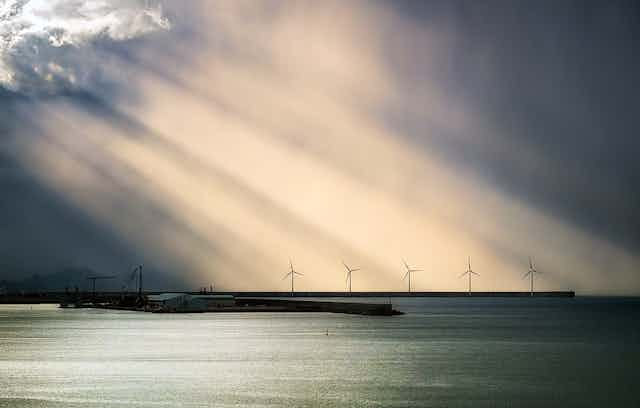The UK prides itself on being an island nation in a world that is almost three-quarters oceans and seas. Packed full of potentially valuable resources, the ocean has long played a vital role in transport and fishing. But commercial exploitation has been slowed by the very real technical and non-technological challenges and the high costs that accompany them.
What has come to be known as the “Blue Economy” is set to power an expanding global ambition to create jobs and economic growth by bringing together expertise and technology across a range of traditional and emerging industries, ranging from energy, shipping and fisheries to biotechnology and seabed mining. Individual sectors of the Blue Economy are increasingly interdependent, relying on common skills and shared infrastructure.
Offshore oil and gas operations at sea, for example, introduced technologies for heavy industrial activities, ranging from engineering to robotics, and these are now employed in other emerging sectors such as offshore wind.
The eight key Blue Economy sectors identified by the OECD (Organisation for Economic Co-operation and Development) as of particular interest are broken down into two categories. There are existing sectors: offshore oil and gas, shipping, fisheries and tourism. Then there are emerging/Blue Growth sectors: aquaculture, marine energy (wind, wave, tide and thermal), biotechnologies and seabed mining. Common to the future of all of these sectors are marine science, international maritime law, marine governance and marine planning.
The Ocean Economy in 2030, a major report issued by the OECD in 2016, estimates the gross value added (GVA) of the Blue Economy at more than US$3 trillion by 2030, (at 2010 prices) and at 2.5% of total global GVA.
Currently offshore oil and gas leads in value at about 34% of the whole, but this will fall to an estimated 21% by 2030. Tourism is second at 26% and is expected to retain this share to become the leading marine industry by value by 2030.

Of the emerging industries, offshore wind demonstrates most growth, from less than 1% today to more than 8% by 2030. In employment, and therefore in social terms, fisheries are by far the largest global marine employer at over 11m people, although at a smaller proportion of value at around 6% including processing. This is followed by tourism at about 7m employees. All other sectors employ fewer than 2m people each.
Scottish universities in particular, such as my own, Heriot-Watt, and UK industry generally, have a wealth of background, knowledge and experience in many of these established and emerging sectors of the Blue Economy and a strong tradition of working together to develop them. The challenges include increasing the sector’s knowledge and data on the current state of ocean resources and marine ecosystems and managing the risks involved in developing and exploiting them.
The UK Industrial Strategy and new integrated collaborations with an eye to the international marketplace have “Blue” written all over them. So delivery will need greater ambition and co-ordination of research in marine and maritime science with other scientific, social science and engineering sectors. Significant breakthroughs in key technologies and innovative business sectors embracing data science and robotics will play large in this new world.
Of course the Blue Economy can only be sustainable if it has a strong interconnectivity with the Green Economy, the creation of a sustainable economy on land. That is, an economy that restores, protects and maintains diverse, productive and resilient ecosystems – and one that is based on clean technologies, renewable energy and active recycling and repurposing of materials.
As oceans cover more of this planet than land, it follows that they should merit the keenest attention when it comes to opportunity and sustainability. Blue is the new Green.

